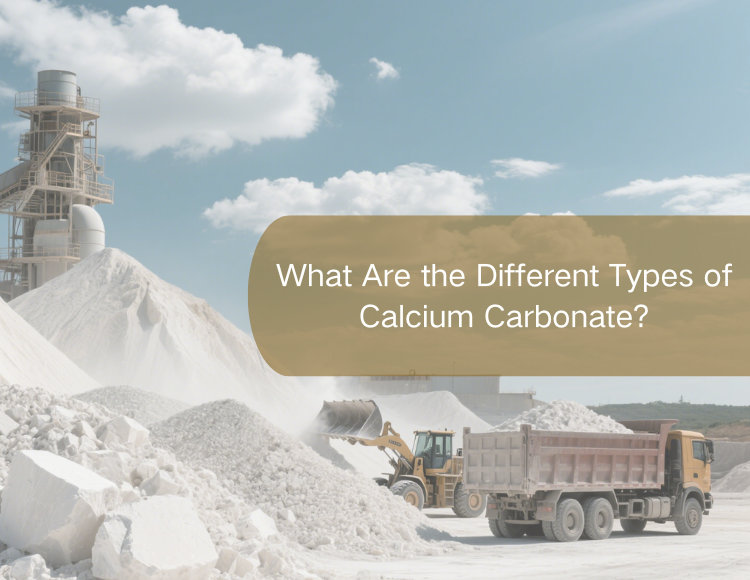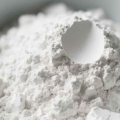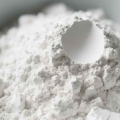- Welcome to China Calcium Carbonate Manufacturer
- WeChat:15078781000
- The Ubiquity of Calcium Carbonate
- Calcium Carbonate: A Fundamental Overview
- Exploring the Three Key Types of Calcium Carbonate
- Comparative Analysis: PCC vs. GCC vs. NCC
- Choosing the Right Calcium Carbonate: A Decision Framework
- Conclusion: Matching Calcium Carbonate to Your Needs
The Ubiquity of Calcium Carbonate
Calcium carbonate (CaCO₃) is one of the most abundant minerals on Earth, playing a pivotal role in industries ranging from construction and pharmaceuticals to food and environmental science. Understanding its variants—Precipitated Calcium Carbonate (PCC), Ground Calcium Carbonate (GCC), and Nano Calcium Carbonate (NCC)—is critical for optimizing performance in specific applications. This article explores their unique properties, production methods, and use cases to help you make informed decisions.

Calcium Carbonate: A Fundamental Overview
With the chemical formula CaCO₃, calcium carbonate exists naturally in rocks like limestone, chalk, and marble. Its versatility stems from its ability to act as a filler, coating agent, or functional additive, depending on its form. Whether enhancing paper strength or fortifying dietary supplements, this mineral’s adaptability makes it indispensable across sectors.
Exploring the Three Key Types of Calcium Carbonate
1. Precipitated Calcium Carbonate (PCC): The Chemically Engineered Marvel
1.1 Production Method: Controlled Synthesis
PCC is synthesized through a chemical precipitation process, typically involving limestone as the raw material. The steps include:
Calcination: Heating limestone to produce calcium oxide (CaO).
Hydration: Reacting CaO with water to form calcium hydroxide (Ca(OH)₂).
Carbonation: Introducing CO₂ to precipitate ultra-pure CaCO₃ crystals.
“PCC’s tailored synthesis allows precise control over particle size and morphology, making it ideal for high-end applications.” — Journal of Materials Chemistry
1.2 Physical Properties and Advantages
Particle Size Range: Ultrafine particles (0.5–5 μm), ideal for precision applications like coatings and pharmaceuticals.
Purity: Exceeds 99%, minimizing impurities for sensitive industries.
Surface Area: Moderate specific surface area (5–20 m²/g), balancing dispersibility and reactivity.
Morphology: Customizable crystal shapes (e.g., cubic, spindle) for tailored performance.
Brightness: High whiteness (>97%), critical for premium paper and paints.
Oil Absorption: 20–30 g/100g, suitable for formulations requiring controlled viscosity.
“PCC’s engineered morphology unlocks functionalities unattainable with natural calcium carbonate.” — Journal of Inorganic Materials
1.3 Applications
Paper Industry: Improves brightness and printability.
Food & Pharma: Acts as a calcium fortifier (E170) and tablet excipient.
Coatings: Enhances opacity and rheology.
2. Ground Calcium Carbonate (GCC): Harnessing Natural Resources
2.1 Production Method: Mechanical Processing
GCC is produced by crushing and grinding natural calcite, limestone, or marble. This cost-effective method yields particles with a broader size range.
2.2 Properties and Limitations
Particle Size Distribution: Coarser particles (1–20 μm) with wide variability, often requiring sieving for uniformity.
Purity: Moderate purity (90–98%), with trace impurities (e.g., iron, silica) limiting food/pharma use.
Bulk Density: High density (2.7–2.9 g/cm³), ideal for volume filling in plastics and concrete.
Surface Area: Low specific surface area (1–5 m²/g), reducing reactivity but enhancing cost efficiency.
Oil Absorption: 10–20 g/100g, lowering formulation costs but sacrificing gloss in coatings.
2.3 Key Applications
Construction: Strengthens concrete and reduces shrinkage.
Plastics: Lowers production costs while improving stiffness.
Paints: Increases volume and matting effects.
3. Nano Calcium Carbonate (NCC): The Next-Gen Material
3.1 Production Method: Advanced Nanotechnology
NCC is manufactured via wet-chemical synthesis or supercritical fluid technology, achieving ultrafine particles (20–100 nm).
3.2 Unique Traits and Challenges
Particle Size: Nanoscale dimensions (20–100 nm), enabling quantum effects for advanced applications.
Surface Area: Exceptionally high surface area (30–100 m²/g), boosting adsorption and interfacial activity.
Surface Modification: Organic treatments enhance dispersion, countering nanoparticle aggregation.
Oil Absorption: High oil absorption (50–80 g/100g), requiring specialized dispersants.
Cost Barriers: Energy-intensive synthesis and technical complexity limit mass adoption.
3.3 Emerging Applications
Biomedical: Drug delivery systems and tissue engineering scaffolds.
Advanced Composites: Reinforcing rubber and polymers for automotive parts.
Environmental: Heavy metal adsorbents in wastewater treatment.
Comparative Analysis: PCC vs. GCC vs. NCC
Key Performance Metrics
Purity: PCC (>99%) > NCC (95–99%) > GCC (90–98%).
Particle Fineness: NCC (20–100 nm) > PCC (0.5–5 μm) > GCC (1–20 μm).
Cost Efficiency: GCC (low) > PCC (moderate) > NCC (high).
Functional Versatility: NCC (high) > PCC (moderate) > GCC (low).
Insights:
PCC balances purity and functionality for premium applications.
GCC dominates cost-sensitive, high-volume industries.
NCC drives innovation but demands R&D investment.
Choosing the Right Calcium Carbonate: A Decision Framework
1. Prioritize Cost vs. Performance
Budget-driven: Opt for GCC.
Purity-critical: Select PCC.
Function-first: Invest in NCC.
2. Future Trends and Innovations
Advances in surface modification and green synthesis are expanding NCC’s role in biodegradable plastics, energy storage, and carbon capture.
Conclusion: Matching Calcium Carbonate to Your Needs
From PCC’s precision engineering to GCC’s economic scalability and NCC’s nano-scale breakthroughs, each variant addresses distinct challenges. By analyzing their properties, industries can unlock this mineral’s full potential.









